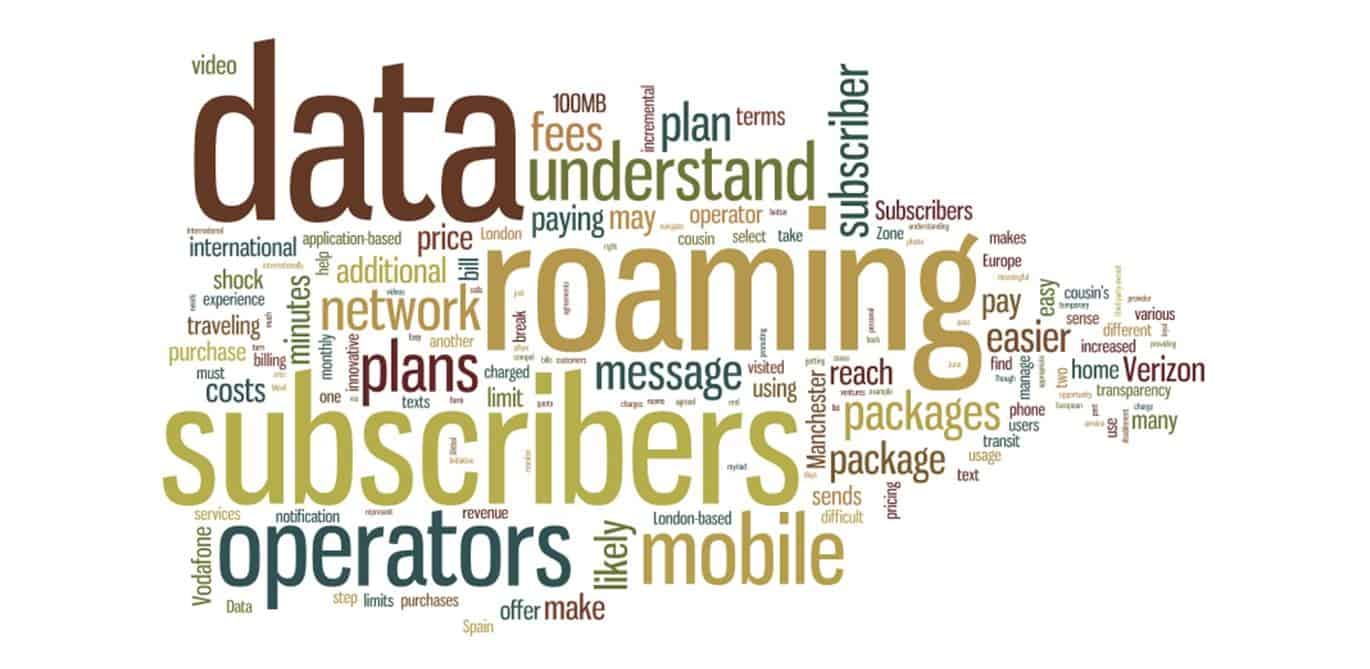International data roaming can be a difficult road to navigate – for operators and subscribers. Operators must work with one another via roaming agreements to determine authentication, authorization, and billing protocol. Subscribers often find themselves combing through literature and price plans to find the appropriate roaming package for their travel itinerary. In short, data roaming can be a headache. But some operators have attempted to alleviate roaming headaches with innovative voice and data packages designed to make life easier for their subscribers and themselves.
Let’s break down what happens to a data-rich message when a traveler ventures outside of his carrier’s coverage area and roams internationally.
A London-based subscriber traveling in Spain sends a photo message to his cousin in Manchester. The message must pass through the visited Spanish network, through international transit services (usually a third-party-owned international cable), through the subscriber’s home network in London, then through his cousin’s home network in Manchester, to the cousin.
When the London-based subscriber sends a multimedia message while traveling, there are a number of fees associated with that cost. He will pay a charge for using the visited network (Spain), costs for international transit of his message back to his home network (London), costs for sending to his cousin’s network (Manchester), data clearing house fees, signaling fees between networks, and other applicable taxes. The various operators incur these fees initially, but eventually transfer most of the costs to subscribers.
Between various costs and price plan semantics, providing an easy-to-understand roaming plan is a difficult proposition. But some operators have begun to innovate.
Vodafone offers a EuroTraveller package whereby subscribers may pay an extra £3 per day to take their UK minutes, texts, and mobile Internet allowances with them into Vodafone’s Europe Zone (a network of 40 different European countries). While in the Europe Zone, subscribers will only be charged during they days they use their phone, and won’t be charged for incoming texts and calls.
Verizon Wireless now has their Global Data Package for American travelers headed to one of 120 locations overseas. Subscribers may select an all-encompassing $25 for 100MB plan or they may opt for a pay-as-you-go solution that works as the name suggests. When subscribers reach their data limit, Verizon sends them a text notification asking if they would like to purchase additional data.
Vodafone and Verizon are just two examples of innovative mobile data plans. In June 2012, the GSMA unveiled its Data Roaming Transparency Initiative by which 24 different operators, including América Móvil, AT&T, China Mobile, France Telecom-Orange, along with Verizon and Vodafone, help their subscribers gain a better understanding of global roaming plans.
The initiatives’ operator members have agreed to develop mobile data roaming plans that offer text message alerts when subscribers reach geographic roaming zones, and reach data limits; monthly data spend limits to help subscribers avoid bill shock; and, temporary service disablement when a subscriber surpasses his data limit.
Though this movement toward transparency is a step forward, it is certainly not the be all and end all of mobile data roaming. With these new data roaming packages, it is easier for subscribers to understand what they are paying for. When subscribers understand fees, they are more likely to purchase additional packages and services. But how can operators express these packages in terms subscribers understand? How can they make these packages easy to monitor and easy to manage for subscribers so that they are not constantly worried about the possibility of bill shock?
25MB or 100MB are not easy terms for regular consumers to understand. While roaming, how many picture messages does that amount to? How many minutes of YouTube videos can be watched? How many emails can be received? This list of data use-cases doesn’t even begin to cover the myriad mobile phone apps using precious data allotment.
The next step for mobile operators is to take mobile data roaming and break the price plans into identifiable chunks of usage. Rather than pay for a certain data limit, subscribers can then pay per-application. For instance, a mobile operator might offer a roaming package purely for minutes of video-watching, or where the video element is separated out in the roaming package. This example makes sense since video, as a time-based application, is easily understood by users. Application-based pricing also allows users more choice to select a roaming plan that best suits their needs. So, paying $25 for 300 minutes of mobile video can make more subscriber sense than paying $25 for 100MB of data.
Increased data roaming price plan transparency does two things. Subscribers obtain more control over their monthly bills and they don’t experience bill shock because they know exactly how much they are paying and what they’re getting in return. In turn, they remain loyal customers, and operators experience reduced subscriber churn.
By using inline notifications such as interstitial pop-ups, operators are granted the opportunity for increased incremental revenue. When subscribers reach their data quota, the operator may send a notification, promoting a "top up” of their data plan. This personal and customized approach – what we call Policy Engagement – to roaming is meaningful and relevant to subscribers at the right time, and is more likely to compel additional purchases than the more opaque roaming plans of the past.
When operators offer application-based mobile data roaming plans, they will be working in terms their subscribers can understand. The more subscribers understand their operators billing plans and data usage fees, the less likely it is they will switch to another provider, and the more likely it is they will purchase premium features.
The easier a product is to understand and manage, the more likely it is a customer will use it. Easy data roaming, in the form of application-based pricing, makes traveling charges easier to understand for subscribers. When policies and data packages are easier to understand, it opens the door for additional subscriber purchases. Additional data package sales represent increased opportunities for operators to generate incremental revenue. So, shouldn’t mobile operators make data roaming simpler for subscribers?












